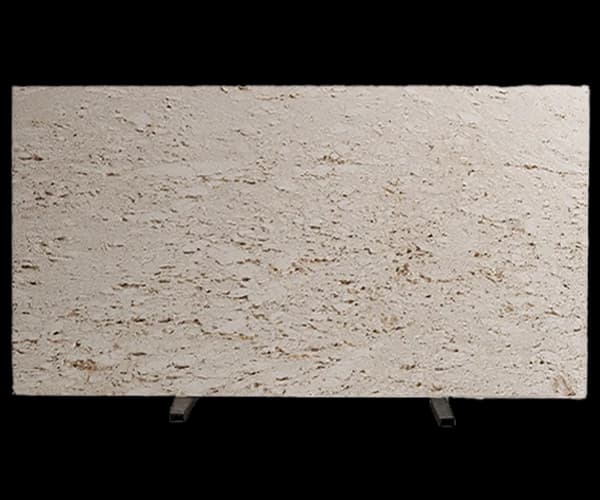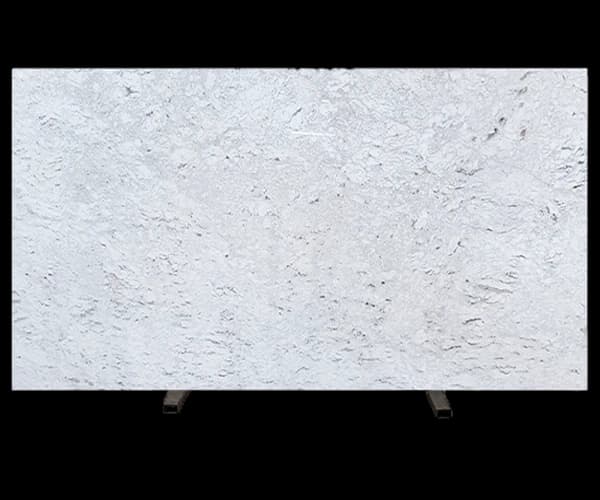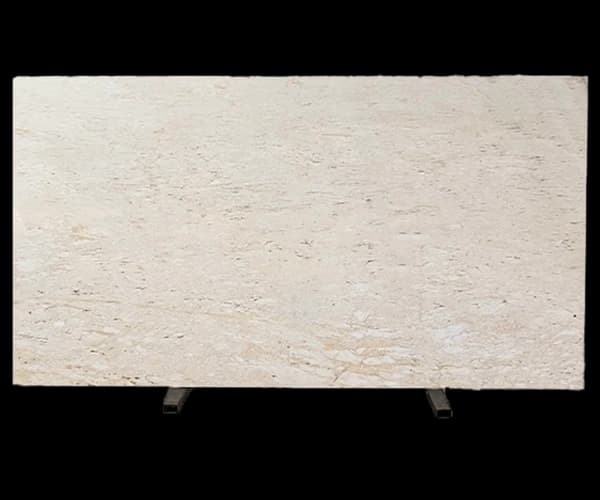Looking for travertine slabs from Turkey? This guide covers colors, finishes, slab sizes, weight per m² and bookmatching options so architects, distributors and fabricators can plan wholesale travertine slabs with confidence. As a quarry-backed Turkish travertine supplier, we also explain export terms (FOB/CIF/EXW) and packaging standards for predictable deliveries.
Travertine slabs are large-format natural stone panels widely used in architecture and interior design. Their expansive dimensions highlight natural veining and allow for seamless applications in kitchens, bathrooms, facades, and commercial spaces. Turkish travertine slabs are internationally recognized for their durability, beauty, and versatility, making them the preferred choice for designers and builders worldwide.
Travertine slabs come in timeless colors such as Ivory, Light, and Antico, each offering distinct aesthetics. Ivory provides brightness and sophistication for elegant interiors. Light brings warm beige tones that blend seamlessly into modern and classic environments. Antico delivers earthy, rustic character that evokes Mediterranean and traditional architecture. These natural variations ensure every slab is unique, allowing architects and homeowners to create surfaces that balance functionality with authentic beauty.
Bright creamy background with subtle veins. Popular for large interior walls, countertops and feature panels. Provides a modern, clean feel with natural depth.
Warm beige tones with soft patterns. Ideal for continuous flooring and facade cladding where uniformity and warmth are desired.
Rustic appeal with earthy variations. Suits outdoor kitchens, courtyards and spaces that benefit from heritage aesthetics and strong character.

Ivory slabs create bright, sophisticated spaces and are a top choice for kitchens and bathrooms.

Light travertine slabs feature warm beige tones, making them versatile for both interior flooring and exterior cladding projects.

Antico slabs display rustic, earthy colors with an antique effect, often chosen for Mediterranean-inspired architecture and outdoor designs.
The finish of a travertine slab defines its texture, reflectivity, and overall character. Polished slabs are glossy and emphasize veining, perfect for luxury interiors. Honed slabs offer a matte finish with contemporary appeal. Brushed slabs introduce a gentle texture and slip resistance, while tumbled slabs create an antique look ideal for rustic projects. Selecting the right finish allows designers to match performance with aesthetics in kitchens, facades, and commercial buildings.
High-gloss surface that accentuates veining. Recommended for luxury interiors and feature walls. Seal carefully to protect against staining.
Smooth matte finish for contemporary floors and wall panels. Comfortable slip resistance makes it versatile in residential and commercial interiors.
Textured surfaces with more grip. Favored for outdoor facades, terraces and rustic designs. Combine with thicker cuts for durability.

Polished slabs showcase reflective surfaces and bold veining, used in kitchens, bathrooms, and hotel lobbies.

Honed slabs provide a matte, non-reflective finish that fits modern interiors and reduces glare under strong lighting.

Brushed slabs add subtle texture for grip and depth, ideal for transitional areas and outdoor terraces.

Tumbled slabs deliver rustic charm and antique style, widely used in courtyards, gardens, and traditional projects.
Travertine slabs are used wherever seamless, large surfaces are needed. In kitchens, they become countertops, islands, and backsplashes. In bathrooms, they serve as vanity tops, shower surrounds, and flooring. On building facades, slabs provide strength, weather resistance, and elegance. Commercial interiors such as hotel lobbies and office spaces also benefit from their luxurious appearance. This versatility makes travertine slabs an essential material for both functional and decorative purposes.
Slabs for countertops, islands and backsplashes. Use honed for daily durability, polished for statement islands. Seal regularly to prevent staining from oils and wine.
Large wall panels create seamless spa-like surfaces. Honed slabs reduce glare, polished accents add luxury. Ensure waterproofing and correct anchoring.
Slabs applied as ventilated facade panels or anchored cladding. Thickness often 20–30 mm depending on wind load and building codes. Consider bookmatching for visual impact.
Countertops and backsplashes combining durability with natural beauty.
Vanities and shower walls creating spa-like environments.
Exterior facades offering strength, insulation, and aesthetic value.
Travertine slabs are processed in large dimensions to meet international design and construction requirements. Standard slabs range from 2400–3000 mm in length and 1200–2000 mm in width. Thickness typically falls between 20–30 mm, with custom cuts available from 15–40 mm. Water absorption is around 0.4–0.8%, making sealing essential. These specifications make travertine slabs suitable for demanding applications, from residential kitchens to high-traffic commercial facades.
Installing travertine slabs requires professional handling due to their size and weight. Proper support and adhesive must be used to ensure stability. In kitchens and bathrooms, sealing is critical to protect against staining and moisture. Outdoor facades should include appropriate anchoring systems. Routine care involves cleaning with neutral products and resealing every 12–24 months. Avoid acids and harsh chemicals that may damage the stone surface.
We’ll get back to you shortly.


